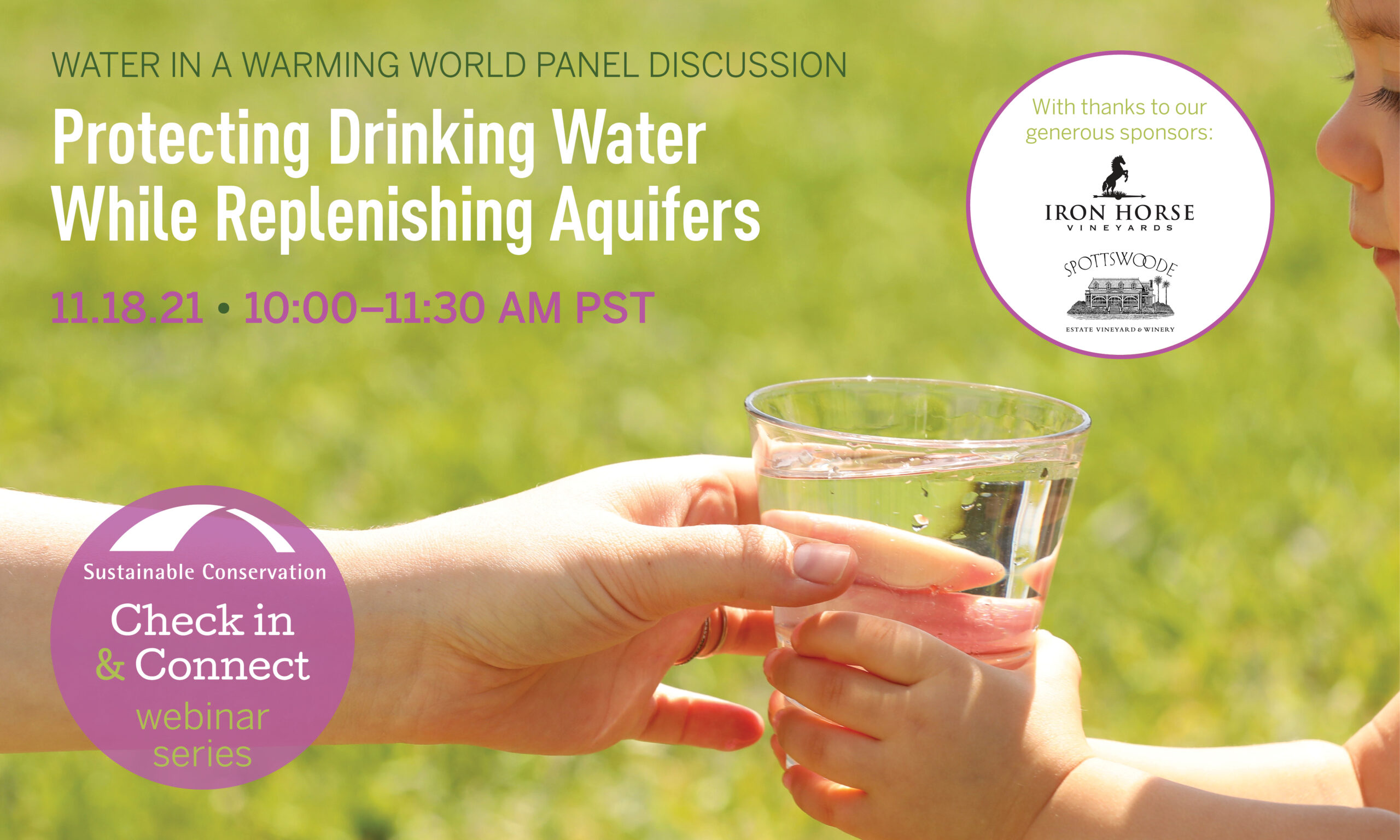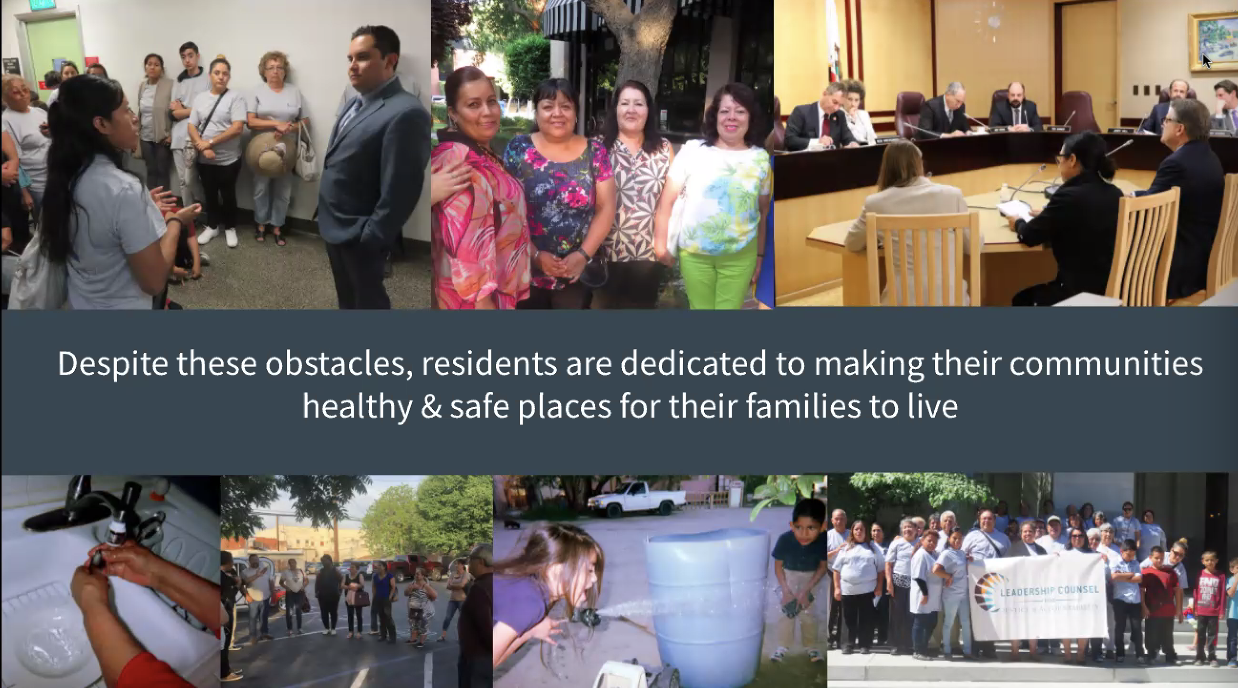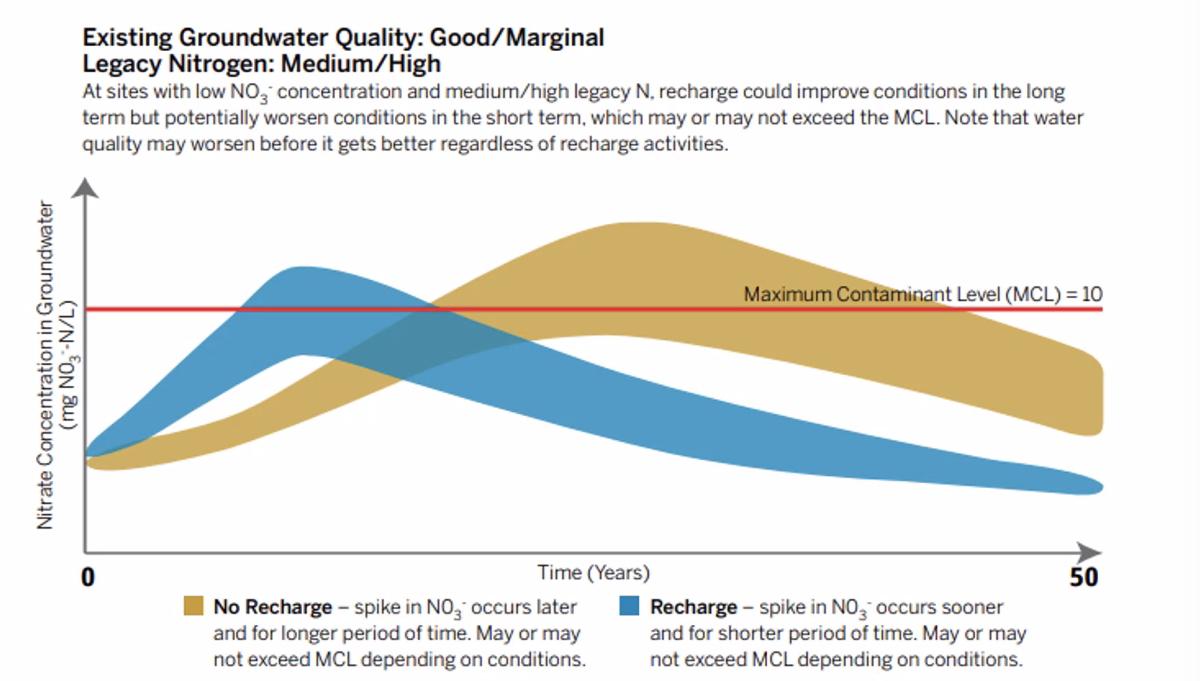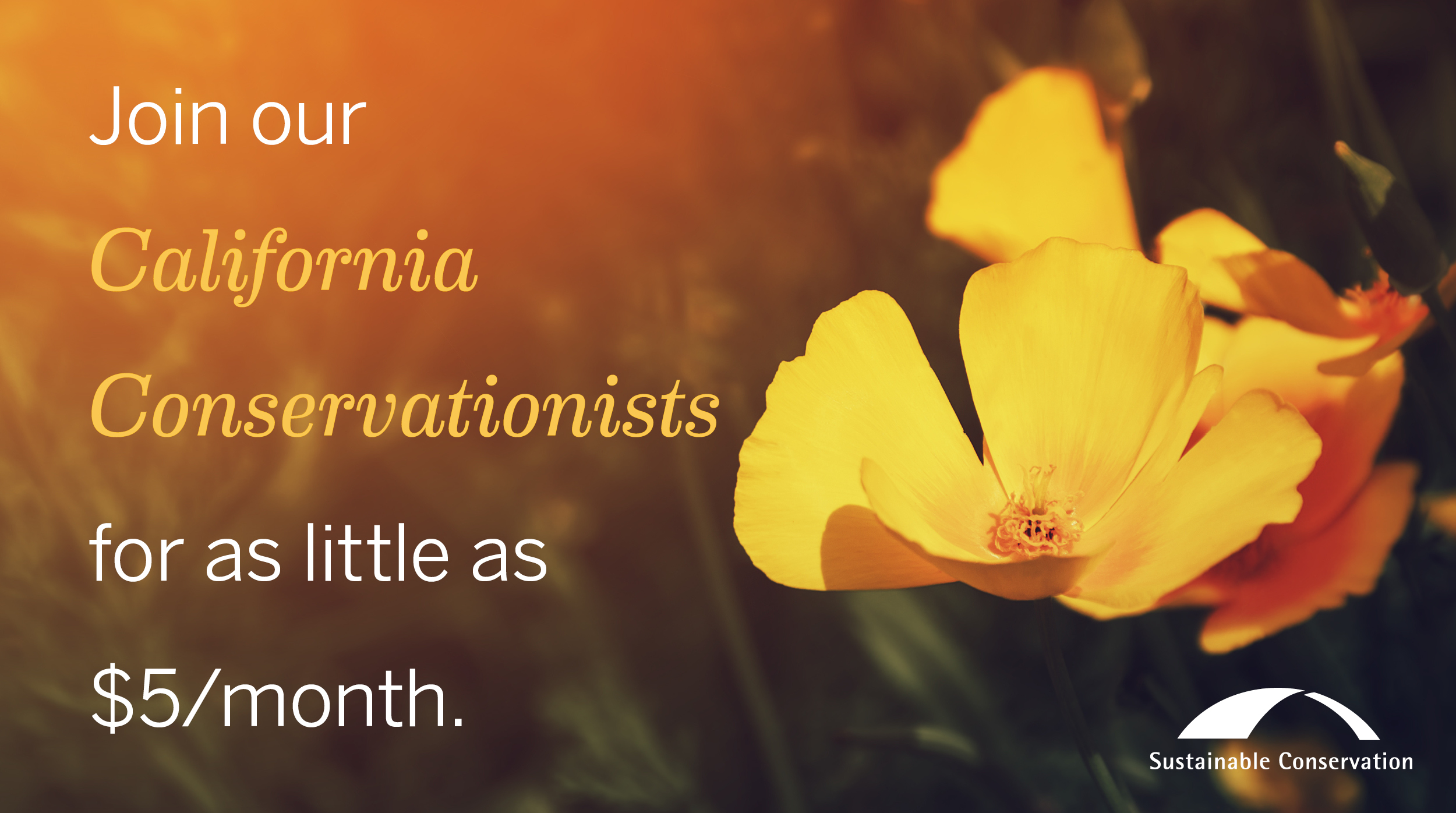
Missed the latest webinar in our Water in a Warming World series? We’ve got you covered with highlights and a full recording of the event.
Sustainable Conservation’s Water Program Director Aysha Massell moderated a fantastic panel of experts who discussed how San Joaquin Valley communities are impacted by drinking water issues, the negative and positive potentials of groundwater recharge on local wells, and how Sustainable Consevation’s water quality guidance and decision-support tools can help. Our panel included Amanda Monaco of Leadership Counsel for Justice and Accountability, Sue Ruiz of Self-Help Enterprises, and Taylor Broadhead of Sustainable Conservation.
Thank you to our generous webinar series sponsors Iron Horse Vineyards and Spottswoode Estate Vineyard & Winery!
Community Drinking Water Challenges
Monaco started with a look at water quality and supply in the San Joaquin Valley, and how these issues affect local communities and individual people’s lives. Groundwater is the main water supply for these households. She shared the story of a family whose well went dry, leaving them without running water in their home for four months. They couldn’t shower or flush their toilets, they experienced public stigma and worry because they couldn’t maintain their hygiene, and they live in fear of it happening again.
The data is stark: 87% of SJV families depend on small community water systems, and 100% of those families depend on shallow wells. On the policy side, 2012 saw AB 685, which enshrined the human right to water in California, so the question remains: why is this happening?
Drought and Scarcity
Ruiz looked at the historic drought cycle in California and noted that while drought is no new thing, our population has grown from 2 million people in 1900 to 34 million in 2000 – and our water needs grow along with us.
People who rely on domestic wells need consistent and reliable data on every aspect of well management – from water levels to surrounding agricultural operations. Without this knowledge, they can’t make informed decisions about their water future as individuals or as a community.

Wells will continue to dry up if we don’t work together to replenish our groundwater and establish water equity. Slide courtesy of Amanda Monaco, Leadership Counsel for Justice and Accountability.
Monaco laid out the problem: communities face problems with water quality, water supply and unaffordable costs. Contaminants from pesticides and fertilizers leach into aquifers. Groundwater levels decline due to over-pumping. And, water is unaffordable – from bottled water to filters to address contaminated water in the moment, to the significant investment needed to dig or deepen wells ($25,000-$45,000 on average, per Ruiz,) these costs are prohibitive to low-income communities.
Recharging Groundwater
Groundwater Sustainability Agencies often list recharge as part of their strategy to replenish their vanishing aquifers, but how and where recharge is done can have unintended consequences for water quality. Broadhead dug into Sustainable Conservation’s water quality guidance suite to illustrate how recharge isn’t a plug-and-play solution.
Legacy nitrate contamination can get flushed below plant root zones into aquifers when we apply water to active or fallow farmland. It’s hard to know how much nitrate is left in soils without consulting historical nutrient application records – and those don’t always exist.
Broadhead also made the point that while the nitrates will lend up in the aquifer anyway due to how these salts migrate over time, groundwater recharge can have a negative short-term effect on water quality – and while 10-20 years isn’t a long period of time by scientific standards, it is very much so for people living with contaminated groundwater.

Broadhead, Massell and partners’ research shows that groundwater recharge can have a positive effect on water quality over time, but the negative effect in the short term could be serious, and has to be taken into consideration.
How Can We Help?
For Monaco, help is threefold. First, we need to respect community expertise to avoid paternalistic solutions that are likely to fail. Second, our own expertise needs to be additive, and that can look like research, funding, technical assistance, or political capital. Third, we need to focus on projects and policies to address community needs first, like multi-benefit recharge projects and drinking water infrastructure fixes.
Ruiz emphasized that we need more data, more research and more time spent understanding how potential contaminants (or “plumes”) might move underground when we recharge aquifers. We need to understand local hydrology, and monitor recharge efforts to see if they improve drinking water quality. There’s state funding now to implement these projects, especially if we can demonstrate a benefit to local communities, but there needs to be oversight and monitoring to make sure they’re done right. If they are not, Monaco added, there needs to be accountability.
And for people and water managers who want to do recharge, Broadhead was explicit: local and regional considerations have to be part of the planning process. We need to know what happened on the fields we look at for recharge. We can flood less nitrogen-intensive crops, like alfalfa or grapes, and refrain from applying fertilizers to crops before any planned flood events. She reiterated Ruiz’s and Monaco’s point that we must monitor these projects consistently to make sure that all the work we’re doing to get recharge done while protecting groundwater quality has the intended impact.
What’s Next?
Stick with us! Bringing people together is what we do, and we encourage you to visit our Check In & Connect page for access to all of our event recordings, so you can catch up on any Water in a Warming World webinars you’ve missed. You can also check out our Twitter coverage of this event.
Our next webinar is on Monday, December 6th. Stay tuned for registration info!
Become a California Conservationist today to receive our awesome community benefits, and your gift will go twice as far this year to help make our events and critical California water work possible!

